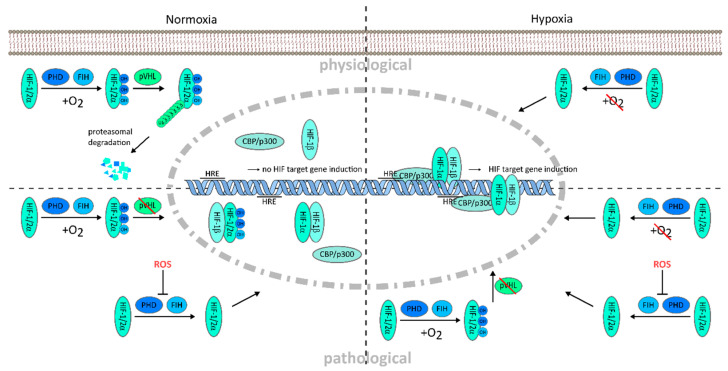Figure 1.
Oxygen dependent hypoxia-inducible factor (HIF) regulation and deregulation of HIF in tumor environment. Normoxic oxygen conditions lead to proteasomal degradation of the hypoxia-inducible factor (HIF) protein and prevent target gene transcription (upper left); Decreased oxygen availability deactivates the hydroxylation of the HIF protein by cofactors, factor-inhibiting HIF (FIH) and prolyl hydroxylases (PHD), which enables HIF protein accumulation and translocation into the nucleus. HIF-α and -β subunits dimerize and form a transcription complex with the cofactors CBP/p300. Complex binding to the hypoxia responsive elements (HRE) on the promoter region of HIF target genes leads to their transcription (upper right); Under pathological conditions, hypoxia can be accompanied by increased reactive oxygen species (ROS) and impaired von Hippel–Lindau protein (pVHL) function, promoting HIF induction to an excessive extent, e.g., driving tumorigenesis under normoxic, as well as hypoxic condition (lower left and right). OH, hydroxylation; Ub, ubiquitination.

